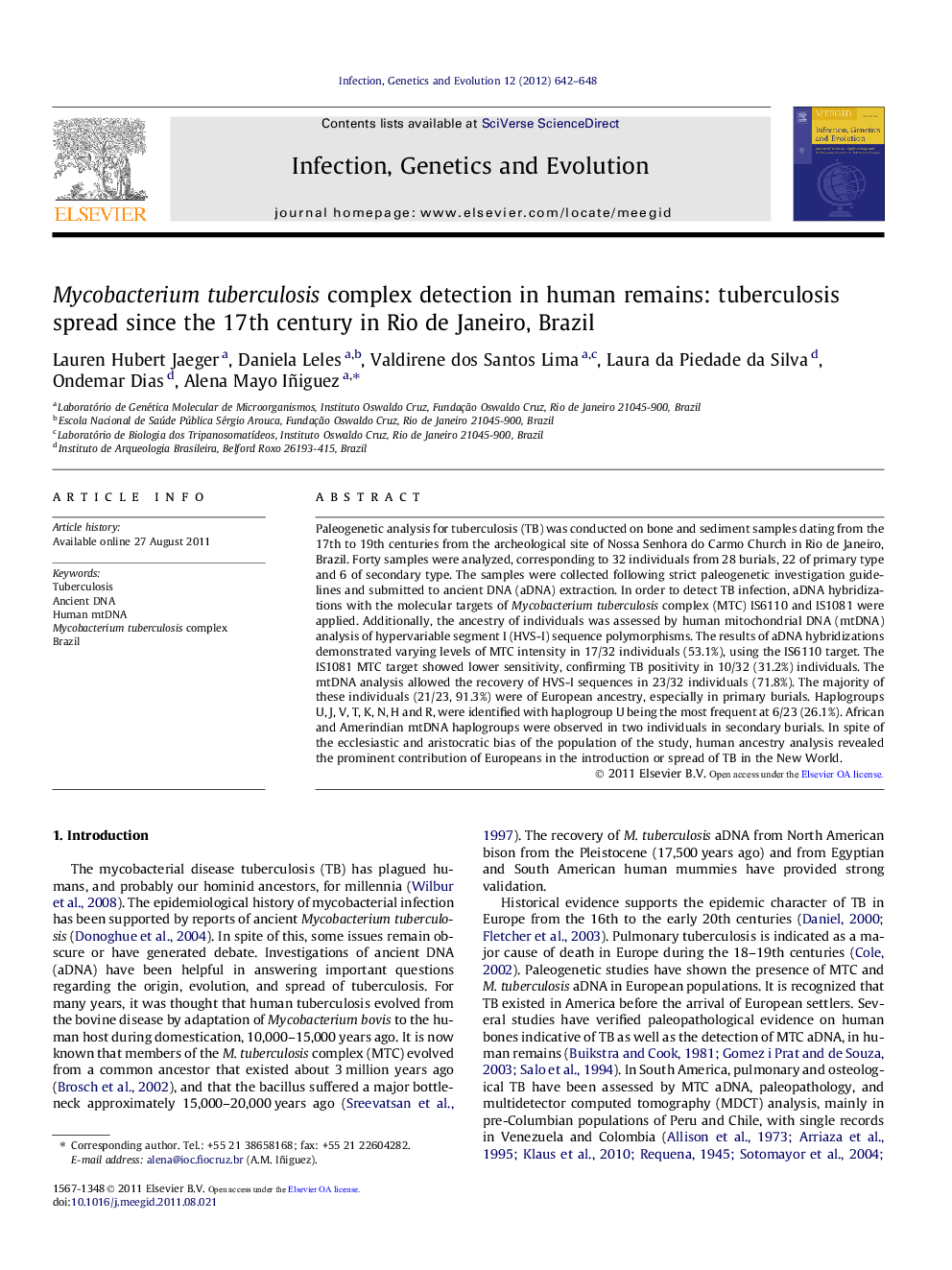| کد مقاله | کد نشریه | سال انتشار | مقاله انگلیسی | نسخه تمام متن |
|---|---|---|---|---|
| 5910420 | 1161353 | 2012 | 7 صفحه PDF | دانلود رایگان |

Paleogenetic analysis for tuberculosis (TB) was conducted on bone and sediment samples dating from the 17th to 19th centuries from the archeological site of Nossa Senhora do Carmo Church in Rio de Janeiro, Brazil. Forty samples were analyzed, corresponding to 32 individuals from 28 burials, 22 of primary type and 6 of secondary type. The samples were collected following strict paleogenetic investigation guidelines and submitted to ancient DNA (aDNA) extraction. In order to detect TB infection, aDNA hybridizations with the molecular targets of Mycobacterium tuberculosis complex (MTC) IS6110 and IS1081 were applied. Additionally, the ancestry of individuals was assessed by human mitochondrial DNA (mtDNA) analysis of hypervariable segment I (HVS-I) sequence polymorphisms. The results of aDNA hybridizations demonstrated varying levels of MTC intensity in 17/32 individuals (53.1%), using the IS6110 target. The IS1081 MTC target showed lower sensitivity, confirming TB positivity in 10/32 (31.2%) individuals. The mtDNA analysis allowed the recovery of HVS-I sequences in 23/32 individuals (71.8%). The majority of these individuals (21/23, 91.3%) were of European ancestry, especially in primary burials. Haplogroups U, J, V, T, K, N, H and R, were identified with haplogroup U being the most frequent at 6/23 (26.1%). African and Amerindian mtDNA haplogroups were observed in two individuals in secondary burials. In spite of the ecclesiastic and aristocratic bias of the population of the study, human ancestry analysis revealed the prominent contribution of Europeans in the introduction or spread of TB in the New World.
⺠Tuberculosis ancient DNA was studied in Brazilian burials from 17th to 19th centuries. ⺠Tuberculosis infection was verified in 53.1% of individuals by ancient DNA hybridization. ⺠Human mtDNA analysis revealed a predominance of European ancestry in the population. ⺠Findings of cultural and ethnic artifacts were related to population mtDNA ancestry. ⺠The significant contribution of Europeans to tuberculosis epidemic was demonstrated.
Journal: Infection, Genetics and Evolution - Volume 12, Issue 4, June 2012, Pages 642-648